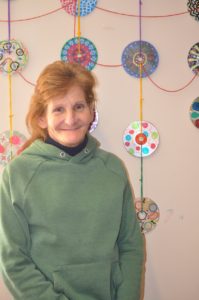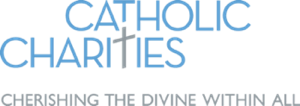As a child growing up on Long Island, Leslie Blunt had an in-ground pool. Her mother was a school teacher. Her father was a police officer. Her sister was an overachiever.
“People used to say I must have had a messed up childhood,” she said. “But I didn’t.”
Leslie was in her late thirties when she was diagnosed with bipolar disorder and major depression. By then, drugs and alcohol had shaped large swaths of her life, and she’d survived car accidents, domestic violence, and other traumas.Her diagnoses came as she was in a drug treatment program.
Nearly two decades later, in 2018, Leslie was at work in Baltimore when she learned her husband had overdosed. She rushed to the hospital, where he slipped into a coma after two heart attacks, and died.
“Six dollars killed him,” she said of the heroin, which had been laced with carfentanil, a drug also used as an elephant tranquilizer. He was one of 2,406 Marylanders who died by drug or alcohol overdose in 2018.

Leslie Blunt at My Sister’s Place Women’s Center in November 2019
“I know it goes together.”
The loss pushed Leslie over the edge. She wasn’t taking psychiatric medication, and depression set in. She started using drugs again, and lost her job. Her landlord nailed shut her door to force her to leave.
In the following months, staff at My Sister’s Place Women’s Center often found her sleeping at their doorway because she saw it as safe, but they could not convince her to accept help. When Leslie talks about that time, she describes selling loose cigarettes and brazenly “walking down the street smoking crack.”
“I know it goes together – the drugs and the psych issues,” she said, looking back to that time. “You have to have something wrong with you to use pain to get pleasure.”
Nationally, more than 43 percent of adults with a substance-use disorder also experienced mental illness in the previous year–a mixture that can lead to homelessness. The National Coalition for the Homeless says nearly two-thirds of individuals experiencing homelessness also have an addiction. About a third have a mental illness – a figure that jumps to as much as 60 percent for women.
Catholic Charities’ own reporting shows that at least 38 percent of the clients it screened in one year are dealing with addiction coupled with mental health challenges. That is part of what led the organization to expand substance use disorder screening and treatment options across a broad range of its programs, including My Sister’s Place Women’s Center, Weinberg Housing and Resource Center, Villa Maria Community Resources Behavioral Health Clinics, Anna’s House, Sarah’s House, and Family and Kinship Navigator (for families impacted by incarceration).
Empowering herself
In July 2018, something switched for Leslie. She started accepting services at My Sister’s Place Women’s Center to help with mental and behavioral health, housing, and case management. As prescription medication helped both ease the urges and address her mental health, she found a bed at the Weinberg Housing and Resource Center.
For Leslie, knitting is a coping mechanism. “I can’t sit still and concentrate,” she said. “When you stop using drugs, you’ve got to have something to do with your time. There is so much time.”
Since she started accepting help, each stitch has led has to another. As Leslie stopped using, she was able to get off the streets. When she got off the streets, she was able to access appropriate medical care. Wendy Gilbert, a therapeutic support specialist who works at My Sister’s Place, has watched Leslie jump over one hurdle after another to set a new course for her life.
“Every single time, she’s done everything she needed to get done,” Wendy said, watching Leslie fiddle with her growing triangle of blue yarn. “And if she fell off, she came back again.”
The next stitch is permanent housing. Leslie has filled out all the necessary paperwork. Now as she knits, she waits, hoping the stitches will fill out a new pattern.
